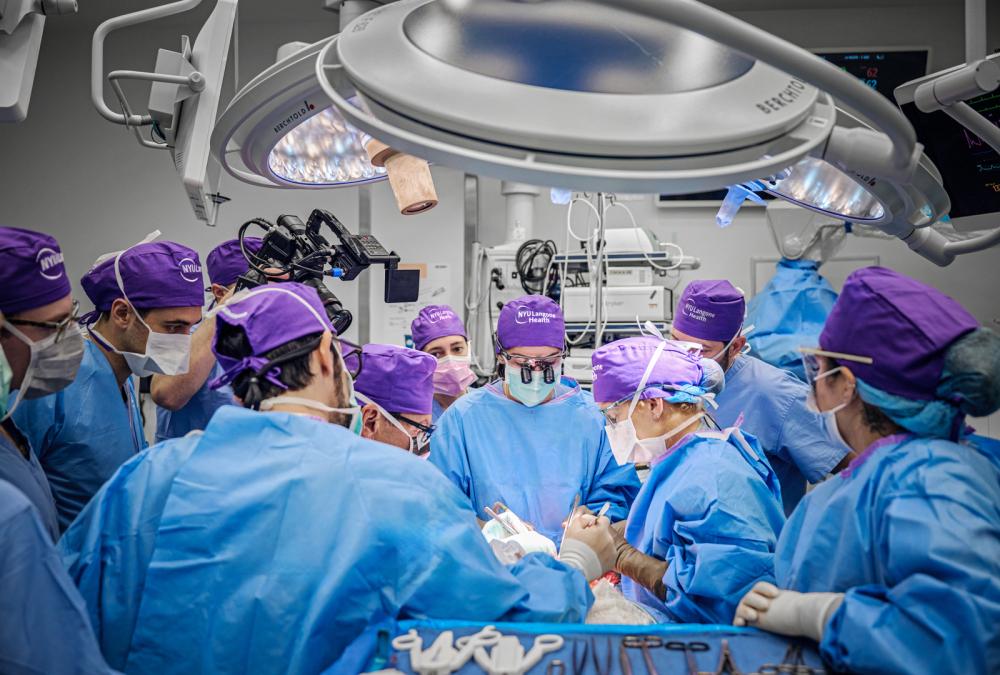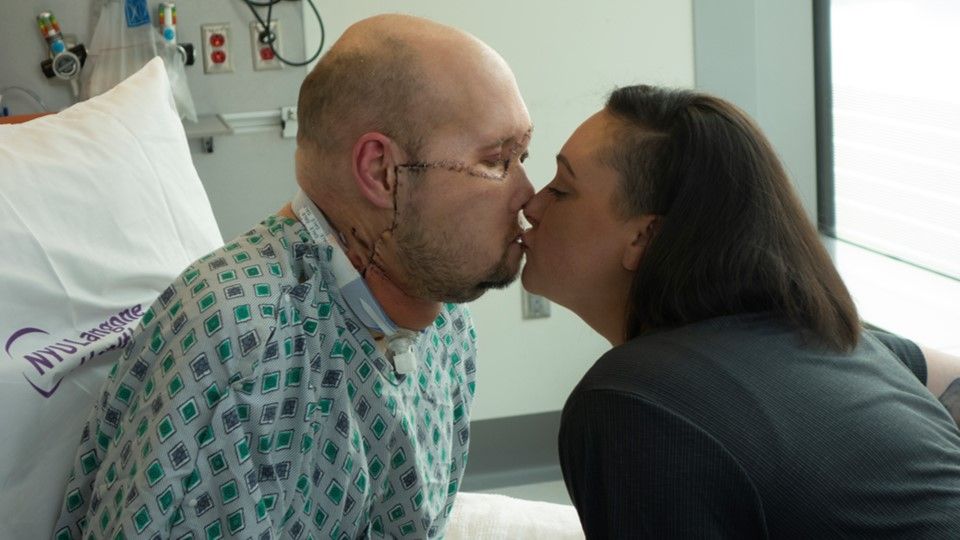In an extraordinary medical achievement, Materialise (Nasdaq: MTLS) has played a crucial role in the world’s first successful whole-eye transplant, including a partial face transplant from a single donor. A team at New York University (NYU) Langone Health Hospital performed this groundbreaking procedure on May 27, 2023.
The recipient, Aaron James of Hot Springs, Arkansas, survived a life-altering 7,200-volt electric shock while working as a high-voltage lineman in June 2021. Texas surgeons had to remove James’ left eye after the injury because of severe pain, and they cut the optic nerve as close to the eyeball as possible. This was to preserve as much nerve length as possible, maximizing reconstructive options and keeping open the possibility of a future transplant. This decision initiated discussions about possibly including an eye in a face transplant.
Despite multiple reconstructive surgeries, James had other extensive injuries—including the loss of his dominant left arm from above the elbow, his entire nose and lips, front teeth, left cheek area, and chin down to the bone.

A team of 140 surgeons helped perform the first whole-eye and partial face transplant. Image courtesy of NYU Langone Health.
Pioneering Breakthrough
After enduring such severe trauma, James’ path to recovery was managed by the NYU Langone team, who got involved in his case just two months after his injury. This early intervention, along with a year of thorough planning and discussions, led to a groundbreaking 21-hour surgery involving over 140 surgeons and medical staff, including clinical engineers from Materialise.
This surgery was extremely complex. Transplanting a whole eye and part of the face simultaneously presented unprecedented challenges. The human eye, intricately connected to the brain via the optic nerve, requires meticulous handling to ensure the viability of the transplanted organ. The NYU Langone team, led by Dr. Eduardo Rodriguez, carefully navigated these complexities, setting a new standard in reconstructive surgery. A partial face transplant added another layer of complexity, demanding the integration of various tissues, muscles, and blood vessels.
“Aaron has been extremely motivated to regain the function and independence he lost after his injury. We couldn’t have asked for a more perfect patient,” said Rodriguez, who is the director of the Face Transplant Program, the Helen L. Kimmel Professor of Reconstructive Plastic Surgery, and chair of the Hansjörg Wyss Department of Plastic Surgery at NYU Langone. “We owe much of our success in this monumental endeavor to the exceptional institutional support we receive at NYU Langone and the unwavering dedication of our world-class team in delivering the highest level of care to our patients. This achievement demonstrates our capacity to embrace the most difficult challenges and drive continuous advancements in the field of transplantation and beyond.”
Surgical planning 2.0
Materialise’s contribution was vital in planning and executing the surgery. Materialise clinical engineers worked closely with the surgical team at NYU Langone Health for several months to develop a “virtual pre-operative plan” based on CT scans, offering a detailed roadmap for the surgical procedure. The company also designed and provided cutting guides and bone models to support seven cadaver labs leading to the surgery. However, after Materialise received notification of a suitable donor and received the CT scans, the team took less than 24 hours to preplan the case, design and 3D print the instruments, and have a Materialise employee fly them to New York in time for the surgery.
The team of engineers designed and 3D printed bespoke medical devices, precise bone models, and cutting guides tailored to the unique anatomical structure of the patient and the donor. These cutting instruments enable surgeons to position bone fragments faster and with extreme precision, making the surgery easier. What’s more, this level of customization is unprecedented in surgical history. It highlights the potential of 3D printing technology in personalized healthcare, promising to revolutionize routine medical procedures, potentially reducing risks and improving outcomes for patients undergoing similar complex surgeries.

Materialise creates personalized surgical guides for the donor (left) and recipient Aaron James (right). Image courtesy of Materialise.
As in previous face transplants, Rodriguez and his team collaborated with NYU’s advanced 3D media services center, the LaGuardia Studio, to create a 3D printed replacement of the donor’s face to restore the integrity of the donor’s identity after the organs were removed to return to his family. Traditionally, a molded, hand-painted silicone mask had been used. However, LaGuardia relies on its Stratasys J850 for the job, which prints with tens of thousands of colors.
Medical triumph
This is the fifth face transplant performed under the leadership of Rodriguez and the first known whole-eye transplant in existence. “The mere fact that we’ve accomplished the first successful whole-eye transplant with a face is a tremendous feat many have long thought was not possible. We’ve made one major step forward and have paved the way for the next chapter to restore vision,” remarked Rodriguez.
NYU Langone Health’s landmark operation has set a new precedent in transplantation and stressed the importance of technological innovation in medicine. While the patient’s sight restoration remains uncertain, the transplanted eye has shown excellent signs of health in other regards based on various clinical tests that measure outcome.

Aaron James received the world’s first whole-eye and partial face transplant. Image courtesy of NYU Langone Health.
A celebrated milestone in the global medical community, the surgery is a pivotal part of James’ resilience. Not only did James overcome a near-fatal accident, but his journey and recovery also demonstrated that determination, innovation, and collaboration can overcome even the most daunting medical challenges.
Subscribe to Our Email Newsletter
Stay up-to-date on all the latest news from the 3D printing industry and receive information and offers from third party vendors.
You May Also Like
Further Understanding of 3D Printing Design at ADDITIV Design World
ADDITIV is back once again! This time, the virtual platform for additive manufacturing will be holding the first-ever edition of ADDITIV Design World on May 23rd from 9:00 AM –...
3D Printer Maker EVO-tech Reborn as NEVO3D — Once More With Feeling
EVO-tech was a 3D printing service and original equipment manufacturer established in 2013 and based in Schörfling am Attersee, Austria. The company produced high-quality material extrusion systems featuring linear bearings,...
3D Systems Brings 3D Printed PEEK Cranial Implant to the U.S. with FDA Clearance
For more than 10 years, 3D Systems (NYSE:DDD) has worked hand-in-hand with surgeons to plan over 150,000 patient-specific cases, and develop more than two million instruments and implants from its...
CDFAM Returns to Berlin for Second Annual Symposium
The second CDFAM Computational Design Symposium is scheduled for May 7-8, 2024, in Berlin, and will convene leading experts in computational design across all scales. Building upon the first event...































